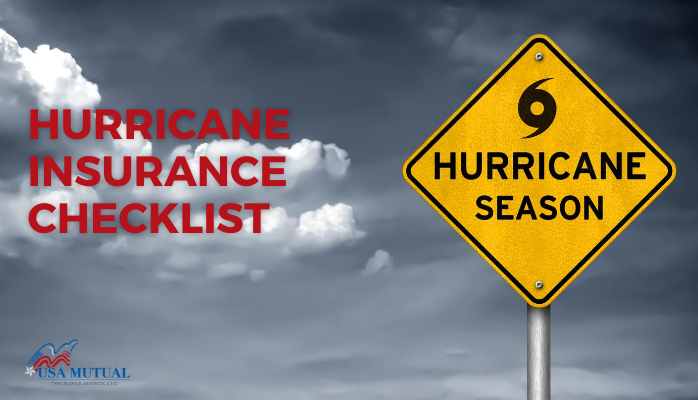|
All homeowners insurance policies provide basic financial protection against losses arising from a fire, windstorm or theft. However, individual insurance companies differentiate themselves by offering an array of coverage options to suit the varied needs of their customers. So it is important to review the different options and decide what is right for you.
Every year take the time to ask yourself this basic question: How much homeowners insurance do I need? The answer is that you need enough insurance to cover the following:
The structure You need enough insurance to cover the cost of rebuilding your home at current construction costs. Do not include the cost of the land. And do not base your rebuilding costs on the price you paid for your home. The cost of rebuilding could be more or less than the price you paid or could sell it for today. Some banks require you to buy homeowners insurance to cover the amount of your mortgage. If the limit of your insurance policy is based on your mortgage, make sure it is enough to cover the cost of rebuilding. (If your mortgage is paid off, do not cancel your homeowners policy—it is the best way to protects your investment in your home.) For a quick estimate of the amount of insurance you need, multiply the total square footage of your home by local building costs per square foot. To find out construction costs in your community, call your local real estate agent, builders association or insurance agent. Factors that will determine the cost of rebuilding your home:
Flood insurance is available from the National Flood Insurance Program (NFIP) and from some private insurers. Earthquake coverage is available from private insurance companies or, in California, also through the California Earthquake Authority. Replacement cost policies Most policies cover replacement cost for damage to the structure. A replacement cost policy pays for the repair or replacement of damaged property with materials of similar kind and quality.If you purchase a flood insurance policy, coverage for the structure is available on a replacement cost basis. Extended replacement cost coverage After a major hurricane or a tornado, building materials and construction workers are often in great demand. This can push rebuilding costs above homeowners policy limits, leaving you without enough money to cover the bill. To protect against such a situation, you can buy a policy that pays more than the policy limits. An extended replacement cost policy will pay an extra 20 percent or more above the limits, depending on the insurance company. Your personal possessions Most homeowners insurance policies provide coverage for your personal possessions for approximately 50 percent to 70 percent of the amount of insurance you have on the structure or “dwelling” of your home. The limits of the policy typically appear on the Declarations Page under Section I, Coverages, A. Dwelling. To determine if this is enough coverage, you need to conduct a home inventory. This is a detailed list of everything you own and information related to the cost to replace these items if they were stolen or destroyed by a disaster such as a fire. Be sure to review your inventory with your agent and if you need more coverage, consider higher limits for your personal possessions. Replacement Cost or Actual Cash Value You can either insure your belongings for their actual cash value, which pays to replace your home or possessions minus a deduction for depreciation up to the limit of your policy. Or you can opt for replacement cost, which pays the actual cost of replacing your home or possessions (no deduction for depreciation) up to the limit of your policy. Suppose, for example, a fire destroys a 10-year-old TV set in your living room. If you have a replacement cost policy for the contents of your home, the insurance company will pay to replace the TV set with a new one. If you have an actual cash value policy, it will pay only a percentage of the cost of a new TV set because the TV has been used for 10 years and is worth a lot less than its original cost. Some replacement cost policies actually replace the item and deliver it to you. Generally, the price of replacement cost coverage is about 10 percent more than that of actual cash value. If you need a flood insurance policy for your belongings, it is only available on an actual cash value basis. Insuring expensive items with floaters/endorsements There may be limits on how much coverage you get for expensive items such as jewelry, silverware and furs. Generally, there is a limit on jewelry for $1,000 to $2,000. You should ask your agent or look it up in your policy. This information is in Section I, Personal Property, Special Limits of Liability. Insurance companies may also place a limit on what they will pay for computers. If the limits are too low, consider buying a special personal property floater or an endorsement. These allow you to insure these items individually or as a collection. You are charged a premium based on what the item (or collection) is, its dollar value and where you live. You can determine the value by providing your agent with a recent receipt or getting the item or collection appraised. Additional living expenses after a disaster Additional living expenses (ALE) is a very important feature of a standard homeowners insurance policy. It pays the additional costs of temporarily living away from your home if you cannot stay in it due to a fire, severe storm or other insured disaster. ALE covers hotel bills, restaurant meals and other living expenses incurred while your home is being rebuilt. Coverage for additional living expenses differs from company to company. Many policies provide coverage for about 20 percent of the insurance on your house. Some companies will even sell you a policy that provides you with an unlimited amount of loss of use coverage, for a limited amount of time. If you rent out part of your house, this coverage also reimburses you for the rent that you would have collected from your tenant if your home had not been destroyed. You should talk to your agent or company to make sure you know exactly how much ALE coverage you have and how long the coverage will be in effect. In most cases, you can increase this coverage for an additional premium. Liability to others This part of your policy covers you against lawsuits for bodily injury or property damage that you or family members cause to other people. It also pays for damage caused by pets. It pays for both the cost of defending you in court and for any damages a court rules you must pay. Generally, most homeowners insurance policies provide a minimum of $100,000 worth of liability insurance, but higher amounts are available. Increasingly, it is recommended that homeowners consider purchasing at least $300,000 to $500,000 worth of coverage of liability protection. Umbrella or Excess Liability Make sure you have enough liability insurance to protect your assets. If you own property and or have investments and savings that are worth more than the liability limits in your policy, you may consider purchasing an excess liability or umbrella policy. Umbrella or excess liability policies provide extra coverage. They start to pay after you have used up the liability insurance in your underlying homeowners (or auto) policy. An umbrella policy is not part of your homeowners policy. You have to purchase it separately. In addition to providing a higher dollar amount, these policies offer broader coverage. You are covered for libel, slander, and invasion of privacy, which are not covered under standard homeowners or auto policies. The cost of an umbrella policy depends on how much underlying insurance you have and the kind of risk you represent. The greater the underlying liability coverage, the cheaper the policy. This is because you would be the less likely to need the additional insurance. Most companies will require a minimum of $300,000 in existing liability insurance on your home and your car, if you own one. Want to know more about homeowners insurance or you are ready to buy a policy. Give the team at USA Mutual Insurance a call at 718-285-6500 or contact us via out Contact Us page.
0 Comments
You probably make a checklist for performing home repairs, a shopping list before hitting the grocery store, or perhaps a to-do list for work assignments—but do you have a checklist for reviewing your insurance coverage? With the start of hurricane season (June 1 – November 30), it's a good time to check your homeowners or renters insurance—and this handy list from the Insurance Information Institute will make it easy to be sure you’re well-prepared in case a storm comes your way.
Check your policy limit; is it enough to rebuild your home? Make sure to have enough coverage to completely rebuild your home in the event it is severely damaged or destroyed. And, remember, the real estate value of a house is not the same as the cost to rebuild. Do you know everything you own and how much it’s worth? Imagine having to re-purchase all of your furniture, clothing and other personal possessions. Now think about what that would cost. Most insurers provide coverage for personal possessions—approximately 50 to 70 percent of the amount of insurance you have on the structure of your home. Is this enough? The best way to determine what you actually need is to conduct a home inventory—a detailed list of your belongings and their estimated value. Check what type of insurance you have for your belongings: Replacement Cost Coverage – pays what it would cost to replace your personal possessions at their current value. Actual Cash Value Coverage – pays to replace your personal possessions only at their depreciated value. Does your policy provide enough Additional Living Expenses coverage? Additional Living Expenses (ALE) coverage kicks in if your home is rendered uninhabitable as the result of a hurricane or other insured disaster. ALE covers the extra costs involved in living away from home—hotel bills, restaurant meals and other expenses, over and above your customary living expenses—incurred while your home is being repaired or rebuilt. If you rent out part of your home, this coverage also reimburses you for lost rental income. Check that the coverage is adequate for your needs: ALE coverage is generally equal to 20 percent of the amount of insurance coverage that you have on the structure of your house; however, most insurers offer the option of higher coverage limits. Many policies provide ALE reimbursements only for a specific amount of time; make sure you’re comfortable with the time limits in your policy. What is the percentage of the hurricane/windstorm deductible stated in your policy? Insurers in every coastal state from Maine to Texas include separate deductibles for hurricanes and/or windstorms in their homeowners policies. Unlike the standard “dollar deductible” on an auto or home policy, a hurricane or windstorm deductible is usually expressed as a percentage. It is clearly stated on the Declarations (front) page of your homeowners policy. Hurricane and windstorm deductibles generally range from 1 to 5 percent of the insured value of the structure of your home. A hurricane deductible is applied only to hurricanes whereas a windstorm deductible applies to any type of wind. If your policy has a hurricane deductible, it will clearly state the specific “trigger” that would cause the deductible to go into effect. Keep in mind: If you live in an area at high risk for hurricanes, your hurricane deductible may be a higher percentage. Depending on your insurer and the state where you live, you may have the option of paying more money in premiums in exchange for a lower deductible. A deductible is basically the amount subtracted from an insurance payout. If you have a high hurricane or windstorm deductible consider putting aside the additional money you may need to rebuild your home. What disasters does your insurance policy cover? Standard homeowners insurance policies provide coverage for hurricanes, wind, theft, fire, explosion, lightning strikes and a host of other disasters. However, all policies also list exclusions—such as for flood or earthquake—which are NOT covered by the policy. Get to know the exclusions in your policy and either talk to your Insurance Professional about purchasing separate coverage, or be prepared to pay the cost of those damages out-of-pocket. Important additional coverages to consider in hurricane-prone areas: Sewer Back-Up Coverage – Can be purchased either as a separate policy or as an endorsement to an existing homeowners policy. Sewer backups and damage from runoff water caused by major downpours are not covered under standard homeowners nor by flood insurance. Flood Insurance – Separate flood insurance is available from FEMA’s National Flood Insurance Program (NFIP) and from some private insurance companies. But, wait, what about your flood insurance policy? People tend to underestimate the risk of flooding, but 90 percent of all natural disasters include some form of flooding—especially hurricanes! If you live in a flood zone, or a hurricane-prone area, a separate flood insurance policy is a must. But it’s equally important to understand what it actually covers. An NFIP flood insurance policy provides coverage for up to $250,000 in replacement cost coverage on the structure of the home and $100,000 in actual cash value coverage for personal possessions. Coverage for basements is limited, so make sure you understand what is considered a basement, as well as what is and is not covered in that area of the house. The NFIP policy also does not include coverage for ALE. Additional tips about flood insurance: There is a 30-day waiting period for a flood insurance policy to go into effect so don’t wait until a storm is imminent to apply for coverage. The NFIP offers a range of deductibles; the deductible you choose will affect the cost of the policy and the amount of money you would receive if you file a claim. If you require a higher amount of coverage than is offered by the NFIP, consider getting excess flood insurance which is available from private insurance companies. |
Archives
February 2022
Categories |
USA Mutual Insurance Agency, LLC | 4830 Arthur Kill Road, LL1 Staten Island, NY 10309 | (718) 285-6500 | [email protected]



 RSS Feed
RSS Feed